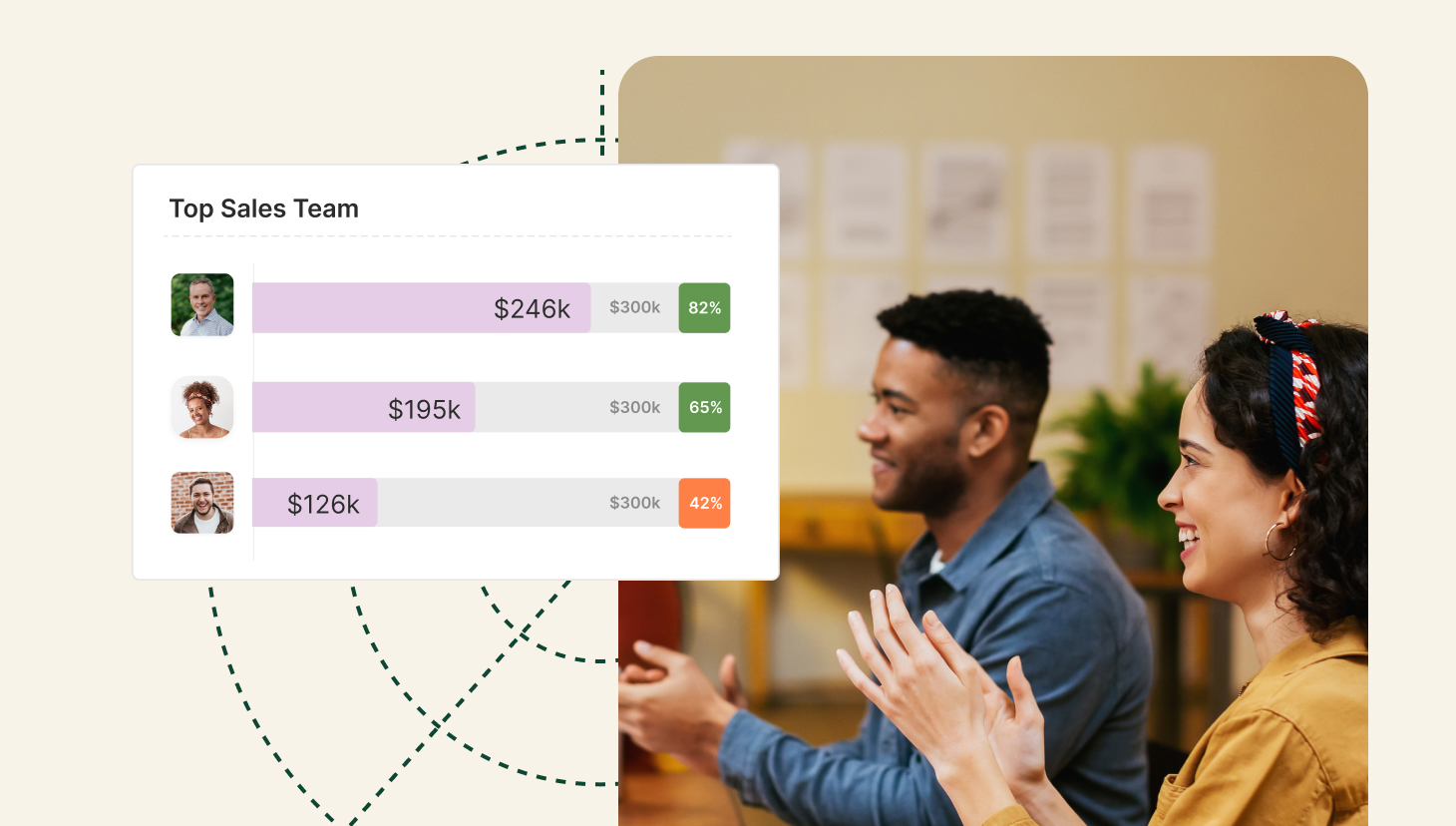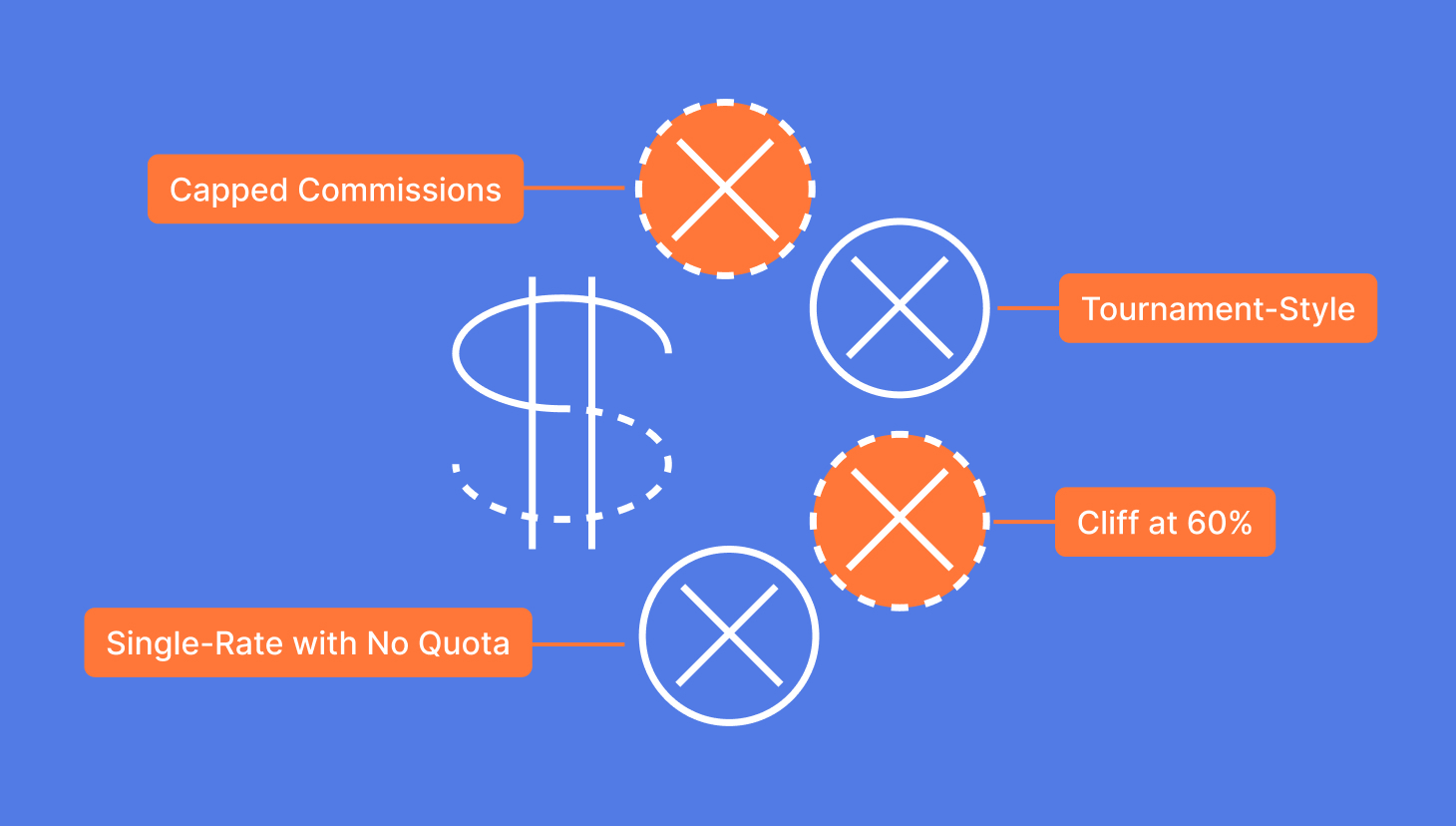Long gone are the days of staying ahead of competitors using traditional sales tactics. The modern sales toolkit has a new and crucial element: sales intelligence. Used wisely, sales intelligence provides valuable insights for strategic planning and informed decision-making.
Essentially, sales intelligence tools use various sources to gather and analyze data to gain a deeper understanding of the market. This leads to a more targeted and effective sales strategy that identifies high-potential leads and gives you a greater sense of customer behavior and preferences.
The key benefits of implementing sales intelligence include:
- Enhanced Lead Generation: Sales teams can better identify and prioritize the most promising leads so that their efforts focus on opportunities with the highest potential.
- Improved Understanding of Customers: Businesses develop a comprehensive view of their customers’ needs, preferences, and purchasing behaviors. Sales teams can then adapt their sales pitches and communications to suit.
- Increased Efficiency: Automation and advanced analytics reduce the time and effort required to gather and analyze data. As such, sales teams can concentrate on building relationships and closing deals.
- Strategic Decision-Making: Sales managers can use real-time data and insights to make informed decisions about resource allocation, market targeting, and sales strategies. This makes operations more effective and agile.
Implementing Effective Sales Techniques
For sales, and in particular B2B sales, the right sales techniques lead to stronger relationships and increased revenue. Sales intelligence makes it much easier for businesses to choose appropriate B2B sales techniques to target, engage, and convert business customers.
Aligning sales intelligence with proven sales strategies involves several key steps:
- Data-Driven Prospecting: Sales intelligence tools can analyze vast amounts of data to identify prospects that fit the ideal customer profile. When identified, sales efforts can be focused on the leads that offer the most promise.
- Personalized Outreach: With insights gained from sales intelligence, sales teams can tailor their outreach to address the specific needs and pain points of each prospect. Prospects are more likely to engage and convert if communications are personal to them. According to McKinsey, 71% of customers expect personalization.
- Informed Decision-Making: Sales intelligence provides real-time data. This means you can see current market trends, competitor activities, and customer behavior as it unfolds. With this information, you can then make decisions based on the current market. Additionally, incorporating asset management into your sales intelligence framework ensures all resources, including physical and digital assets, are tracked, optimized, and effectively utilized, enhancing overall decision-making capabilities and operational efficiency.
- Efficient Resource Allocation: Sales managers can allocate resources more efficiently by understanding which leads are most likely to convert.
Sales Intelligence Components
Firmographics
- Ownership types (whether it’s private or public, for example).
- Industry.
- Number of employees.
- Number of locations.
- Annual revenue.
Psychographics
The psychographic profile of an account is all about their beliefs on what is emotionally or intellectually vital for them to make decisions. Understanding an account’s psychographics will allow you to uncover their motivations. It includes their:
- Style of decision-making.
- Concerns and needs around compliance.
- Risk tolerance.
- Financial decision-making and budgeting behavior.
- Culture.

Technographics
This is simply the technology used by an organization. When you know the systems (SEP, MAP, CRM, etc.), you know whether they would benefit from what you have to offer them, and you can target them accordingly.
Market Updates
The economy impacts spending for B2B companies. But, no matter the market conditions, there will always be updates on how companies are performing. You can use this information to your advantage by timing your solutions to meet companies’ needs as they arise.
Persona Maps
Persona maps help you track your influence and progress. It tells you who people are, their roles, and your engagement level with them.
Intent Data
This is one of the critical aspects of sales intelligence because it tells you which companies are interested, what drives their interest, and the likelihood of them converting. This data comes from their web browsing. For example, it might include the topics they’re researching online, the webpages they’re visiting on your site even if they’re not form-filling, which of your campaigns they’ve seen, and whether they’ve read reviews on third-party sites.
How to Create an Ideal Customer Profile
Read BlogGenerating Quality Leads Using Sales Intelligence
Sales intelligence also transforms how businesses identify and engage potential clients. Sales teams can improve their ability to attract, qualify, and convert high-quality leads. Learning how to generate B2B leads effectively can be streamlined with the right sales intelligence tools.
Strategies for Integrating Sales Intelligence into Lead Generation Processes
- Identify Ideal Customer Profiles (ICP)
Use sales intelligence to analyze customer data and identify key characteristics of your best customers. Then, detailed ICPs can be created to guide the lead generation process.
- Target Prospecting
Use sales intelligence tools to identify prospects who match your ICPs. Focusing on high-potential leads increases the chances of conversion.
- Personalized Outreach
Leverage insights from sales intelligence to tailor outreach messages. Personalized communication that addresses prospects’ specific needs and pain points will be more likely to capture their attention and prompt a response.

- Behavioral Analysis
Use sales intelligence to analyze the online behavior and engagement patterns of prospects. Understanding their interactions with your website and content lets you learn about their interests and readiness to buy.
- Lead Scoring and Qualification
Implement lead-scoring models that incorporate data from sales intelligence. Sales teams can prioritize leads that are most likely to convert by assigning scores for things like engagement, fit, and buying signals.
- Continuous Improvement
Review and refine your lead generation strategies regularly based on insights from sales intelligence. This will ensure that your tactics remain aligned with changing market conditions.
The Benefits of Using Sales Intelligence for Targeting and Qualifying Leads
Enhanced Precision
Since sales intelligence provides detailed information about prospects, it means sales teams are more accurate with their lead targeting. This enhanced precision increases efficiency in the process and reduces wasted efforts.
Increased Relevance
With access to comprehensive data, sales teams can craft highly relevant and personalized messages that resonate with prospects. This increases the likelihood of engagement and strengthens connections with potential customers.
Improved Lead Quality
By focusing on leads that match ICPs closely, you can spend more time pursuing the ones that are more likely to convert.
Shortened Sales Cycles
Targeting and engaging the right leads from the outset can shorten the sales cycle. This means sales teams spend less time on unqualified leads and more time nurturing high-potential prospects toward a successful close.
Driving Demand Generation with Sales Intelligence
Demand generation, or creating awareness and interest in a company’s products or services, is crucial for a healthy sales pipeline. A robust demand gen strategy is key to attracting and nurturing potential customers until they are ready to purchase.
How Sales Intelligence Supports Demand Generation Efforts:
- It helps you identify target audiences. You can use sales intelligence tools to analyze data and pinpoint the characteristics of high-potential audiences. Your demand generation campaigns are directed toward the most relevant and receptive groups.
- It enhances content relevance. Sales intelligence insights allow marketers to create content that resonates with the target audience’s interests and pain points. Relevant content is more likely to engage prospects and drive them down the sales funnel.
- It optimizes campaign performance. Sales intelligence data helps sales teams to identify what works and what doesn’t for each campaign. Monitoring and analyzing this data allows you to optimize campaigns according to what performs better.
- Targeted outreach is better than ever before. With the level of detail provided by sales intelligence, sales teams can target their outreach and so demand generation activities are more effective.
Design, track, and manage variable incentives with QuotaPath. Give your RevOps, finance, and sales teams transparency into sales compensation.
Talk to SalesPractical Tips for Using Sales Data to Boost Demand Generation
Here are some practical tips:
- Exploit Data for Segmentation
Sales intelligence can be used to segment your audience based on criteria like:
- Industry.
- Company size.
- Buying behavior.
Each segment can then be given tailored demand-generation strategies, yielding better engagement and conversion rates.
- Create Targeted Content
Use sales intelligence to develop content that addresses the specific needs and challenges it has identified. Your content can include whitepapers, webinars, blog posts, or case studies–whatever best suits your target audience.
- Set up Account-Based Marketing (ABM)
Your sales intelligence data can be used to identify high-value accounts. This can help you focus demand generation toward these areas, thus making your marketing efforts more effective.
- Analyze and Iterate
Seek to analyze your demand generation performance campaigns using sales intelligence data. This means you can identify trends and make adjustments to improve outcomes.

Integrating Technology to Enhance Sales Intelligence
Modern technologies play an important role in maximizing sales intelligence effectiveness. Sales intelligence–and its capabilities–can be enhanced with various tools and platforms. Here are some considerations:
- Voice Over IP Systems: Hosted VoIP systems can improve communication and collaboration within sales teams. With their advanced features like call analytics, CRM integration, and remote accessibility, VoIP systems are a useful tool for making the most of sales intelligence.
- Customer Relationship Management (CRM) Systems: CRMs like Salesforce and Hubspot are foundational for managing customer interactions and data. Typically, these integrate with sales intelligence tools to provide a centralized platform where you can track leads, analyze customer behavior, and improve your sales strategies.
- Marketing Automation Platforms: Tools that automate marketing tasks like email campaigns, social media posting, and lead nurturing (Marketo and Pardot, for example) can use your sales intelligence data to tailor your marketing efforts.
- Data Analytics Tools: Platforms like Tableau and Power BI help you visualize your sales data. Visualizations make it easier to identify trends and insights. Their integration with sales intelligence systems help precision of real-time information and reports.
- Artificial Intelligence (AI) and Machine Learning: AI-powered tools like Gong and Chorus analyze sales calls and interactions to provide insights on sales performance and customer sentiment. The ability of machine learning algorithms to predict sales trends means you also have recommended actions for improving outcomes.
- Predictive Analytics Tools: Solutions like InsideSales.com use predictive analytics to forecast sales opportunities and identify the best leads to pursue.

The Benefits of Integrating Modern Technologies with Sales Intelligence Tools
| Benefit | Impact |
| Improved data accuracy | Advanced technologies ensure that the data collected is accurate and up-to-date, which is critical for making informed decisions. |
| Enhanced collaboration | Tools like VoIP systems facilitate better communication among team members and are essential tools for virtual team building activities. Insights and strategies derived from sales intelligence can then be shared seamlessly. |
| Automated processes | Automation tools can streamline how data is collected and analyzed. This reduces manual effort and means sales teams can focus on strategic activities. |
| Scalability | Modern sales intelligence platforms are scalable. This means businesses can expand their capabilities as they grow. |
Transitioning from Legacy Systems to Modern Sales Intelligence Platforms
outdated systems can pose significant challenges for sales intelligence, including data silos, limited functionality, and inefficiency. Effective data migration from legacy systems is crucial for making the most of advanced sales intelligence platforms.
- Assess Current Systems: Evaluate your existing systems to understand their limitations and identify the requirements for a new sales intelligence platform.
- Plan the Migration: Develop a migration plan that includes timelines, resources, and risk mitigation strategies. Make sure that data integrity is maintained throughout the process.
- Choose the Right Platform: Select a sales intelligence platform that meets your business needs and integrates well with other tools and systems in your tech stack.
- Train Your Team: Provide training to ensure your sales team is proficient in using the new platform and understands how to make the best use of its features.
- Monitor and Optimize” After the transition, continuously monitor the new system’s performance and make necessary adjustments to optimize it.

Leveraging Sales Intelligence to Boost Your Sales Productivity: Final Thoughts
Traditional sales tactics simply aren’t enough anymore if you want to stay ahead and fight off the competition. Using sales intelligence gives you a strategic advantage: it harnesses various data sources and helps you optimize your sales processes.
Integrating advanced technologies can help your business to streamline its operations and improve relationships. Ultimately, it drives revenue growth. Being proactive in your use of sales intelligence means you remain agile and can respond to market trends.
Getting on board with sales intelligence isn’t just about being efficient, however. It’s all about adapting to changes quickly, like shifts in the market or changes in customer needs. When organizations prioritize data-driven insights from sales intelligence, they position themselves as industry leaders, and they set the stage for sustainable growth.
Author Bio: Lucas Rossi, Growth Marketing Manager
Lucas Rossi is a Growth Marketing Manager at Dealfront, the go-to platform for giving sales and marketing teams the data to close deals in Europe. Rossi plays a key role in refining Dealfront’s data-driven approach to decision-making, leading to better lead quality and sales results.



